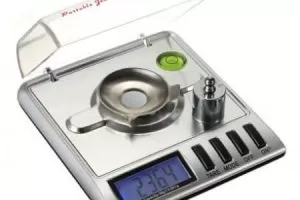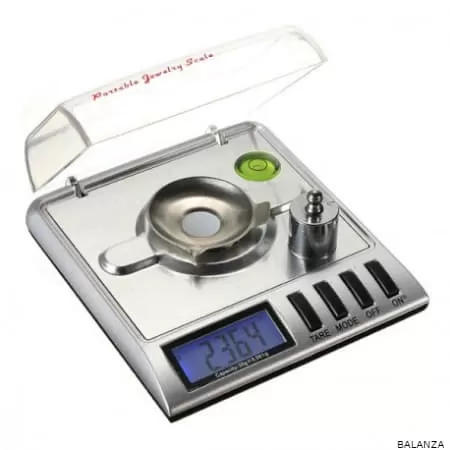What Is a Precision Scale ?
Use of the White or Precision Scale
The Precision Balances have different uses that are not limited only to scientific or domestic: weighing substances before and after a reaction or mixture, the type of mixture of industrial substances, titrations, paint, even weighing very small parts are some of the cases where the balances intervene. Their intervention is widespread in jewelry, scientific laboratory, genology and even in haute cuisine. In these spaces the maximum accuracy is required to be able to value the materials, since a small error in the weight, this can determine a fatal error in the economic valuation or in the composition of a mixture, recipe or reaction of an ingredient.
Digital Precision Scale
The Digital Precision Scale is a non-automatic weighing instrument that uses the action of gravity to determine mass. It consists of a single load receptor (plate) where the object to be measured is deposited. A load cell measures the mass from the force (weight) exerted by the body on the load receptor. The result of this measurement (display) is shown on a display device. The digital balance is usually a laboratory equipment and are essential equipment in chemical operations, analytical and formulation in industries and quality laboratories … We can also mention another element of these digital operators: the printer, whose inherent task is to record the results of measurement. It is generally used in laboratories where it is always sought to document the results of analysis and studies. Among the different digital models we can find a great variety according to the weighing range, as the case of the compact digital ones that are ideal when you do not want to extract the weight of a product of great magnitude, reason why its operation is simple.
Antique Precision Scale
The oldest scales have been discovered in the Indus River Valley, near present-day Pakistan, and date back to around 2000 BC. These early scales consisted of two plates suspended from a beam. On one plate of the scale the product to be weighed was placed and on the other one the weight, until the plates were balanced. The scale is the symbol of fairness and justice, law and fair trade, from the oldest known societies to the present day. The scale evolved as it was carried along the dirt roads and used in open-air markets, until it became what it is today: a high-tech, precision device.
Home Precision Scale
A home scale won’t be as accurate as an expensive digital scale, but it can give you a pretty good idea of the weight of a small object. It is easy to build scales that measure the unknown weight of small items against the known weight of another item, in this case, coins. This eliminates the need for graduations on the scale.
Things you will need:
- Lightweight cardboard
- Scissors
- Glue
- Pencil
- Coins
Step 1
Cut out two 3-inch by 3-inch cardboard squares. These will be the trays to hold the items to be weighed and the counterweight. Each square should be the same size.
Step 2
Place a square on each end of the ruler. Use the side of the ruler with the measurements shown. Align the squares evenly and glue in place. Allow the glue to dry completely.
Step 3
Place the ruler on top of the pencil. Use the measuring marks on the ruler to make sure that the pencil is directly in the center. Balance the ruler on the pencil. If one side is heavier, trim the cardboard until the scales are balanced.
Step 4
Place one coin in the tray and the item being weighed in the other. Calculate the weight by placing coins at one end until the scales balance. Once the scales are balanced, the weight of the item is equal to the weight of the coins.
Step 5
Achieve a specific weight using a coin or coins equal to the amount of weight you need. Multiply the weight of the coin by 6 inches. Divide this figure by 5. The ratio will tell you where to place the coin on the ruler. If you use a nickel, your answer would be 4.8 and you would place the coin at the 4.8-inch mark on the ruler.
Step 6
Add the substance to the tray on the other side of the ruler until the balance is balanced. You now have 5 g (or whatever weight you used) of the substance. Use this method to weigh herbs, spices, powders or any other light items you need to measure.
Where to Buy a Scale or Precision Scale and What is its Price Range in Euros and Dollars ?
A Precision Scale can be located in any page or store where they sell items of measurement and weight control or mass among these is for example the Amazon store where you can get a Precision Scale with small pocket LCD screen with prices from 3.53 euros as well as we can place a Digital Precision Scale with a price of 2336.42 euros according to the specifications you want.
Measuring Range of a Precision Scale
The Precision Scale can be used to weigh both objects and gases. These balances usually have capacities of 2-2.5Kg and measure with an accuracy of up to 0.1-0.01g. However, there are some that can measure up to 100-200g with accuracies of 1mg (0.001g); and others that can measure up to 25kg with accuracies of 0.05g. Regarding the units of measurement, most precision balances have a very popular unit which is the gram, many of them have at the same time units of measurement called carats which are used for weighing precious stones or gems, we can also find precision balances that have units of measurement such as grain (used to measure soap powder), or also include the milligram which will be expressed in the display of that balance as 0.001 g = 1mg or 0.01 g = 10 mg.
Difference Between the Analytical Balance and the Precision Balance
The basic difference between these two types of scales lies in the precision or sensitivity and in the capacity. In this sense, the Analytical Balance has a much higher precision, from 0.1µg to 0.1mg depending on the model. But it can only weigh substances up to 200 grams or a little more. The Precision Balance, on the other hand, has a sensitivity of up to 1mg and can weigh substances of up to 2.5 kg depending on the model. As far as the use as auxiliary measurement is concerned, both are widely used in the laboratories but the Analytical Balance is used to carry out the actual analytical tests. In contrast, the Precision Balance is used for routine, fast and simple measurements that do not require such precision. Analytical Balances have a capacity of 200 grams and are designed to measure small masses, in a range of less than one milligram. In the case of digital models, their sensitivity reaches up to ten thousandths of a gram (0.0001 grams, or 0.1 milligrams). The electronic analytical balances no longer measure real masses, but analyze the force that is necessary to counteract the mass that is being measured. To achieve this, an electromagnet is used, which generates that accessory force and is measured, until it is capable of counteracting the mass of the object.
Related Products in ALPHAPEDIA

MINILAND SCALE: Prices and Offers
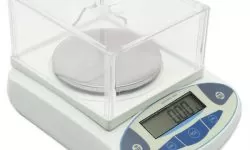
LABORATORY BALANCE: Definition, Use and Parts
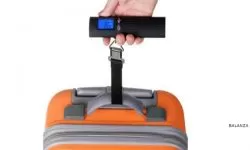
LUGGAGE SCALE: For Travel, Handheld and Digital
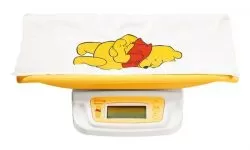
BABY SCALES: Definition, Price and Types

ETEKCITY SCALE: Prices and Offers at Amazon
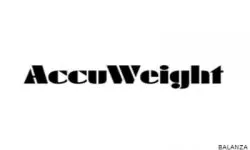
ACCUWEIGHT SCALE: Prices and Reviews on Amazon
About Laboratory Instruments in ALPHAPEDIA

USE OF VOLUMETRIC FLASK

NUMAXES SCALE: Prices and Offers

CRYSTALLIZER: Definition, Use, Function and Characteristics
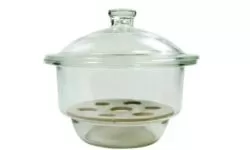
DESICCATOR: Definition, Use, Function and Price
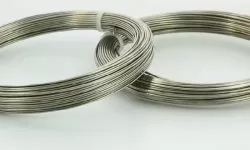
PLATINUM WIRE: What Is It ? Its Function and Price

GRAMS SCALE: What Is It For ? Models and Brands
Other Products of Interest in ALPHAPEDIA

MILITARY BOOTS: Brands, Styles and Prices
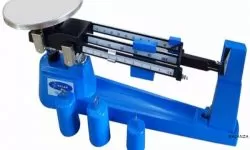
MONOPLATE or GRANATARY BALANCE: Its Use and Characteristics

WATCH GLASS PRICE

💚 WALL LAMPS: Rustic, Modern, Indoor and Outdoor

WOODEN CHILDREN´S BENCHES: Great Price on Qualified Products

BOSCH SANDER: Great Price on Qualified Products
PRECISION BALANCE IMAGE
